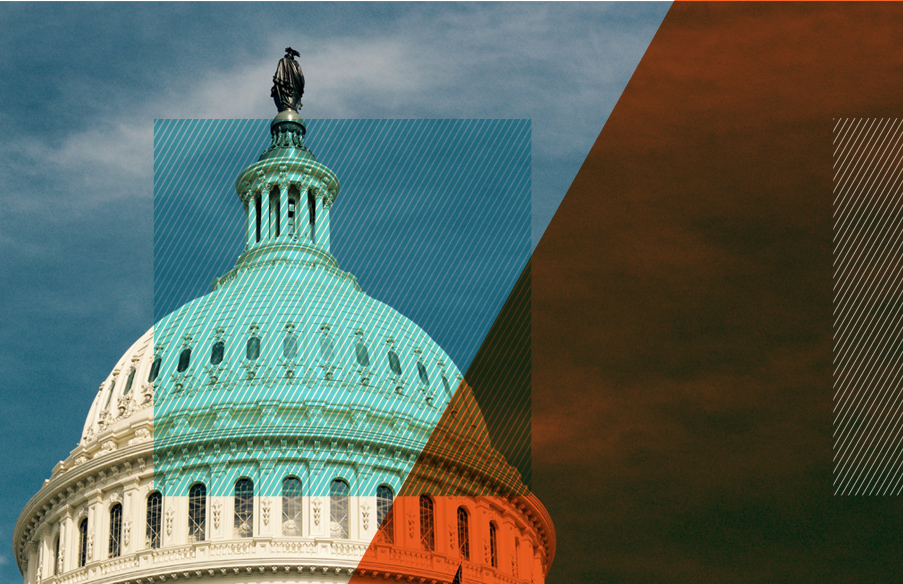The Struggle to Afford Food in College Towns — and What Colleges Are Doing About It
Rising tuitions have forced many students to reassess the true value of a college degree and get more creative in funding the high cost of higher education. But what happens when these larger costs make it difficult to afford the essentials—like meals and housing?
A 2018 study from the Wisconsin Hope Lab found that 42 percent of community college students consider themselves to be low or very low in food security. (Food insecurity is a state in which “consistent access to adequate food is limited by a lack of money and other resources at times during the year,” according to the USDA.)
At universities, the number who have low or very low food security decreases to 36 percent, likely due in part to enrollment in campus meal plans. Of university respondents, 40 percent said that they were unable to afford balanced meals, while 25 percent reported skipping meals altogether because they did not have enough money for food. The study also found that students who work at least 20 hours per week, and those unemployed but looking for work, experienced higher rates of food insecurity.
The students’ struggles with food security are also apparent in the American Communities Project’s College Town counties, according to an ACP analysis of the Robert Wood Johnson Foundation’s 2018 County Health Rankings. The average Food Environment Index for College Towns is 7.3—just above the national average of 7. Yet, in those rankings, about 15% of those who live in the average College Town county experience “food insecurity.”
That number was more inline with lower-income and less-educated community types, such as Working Class Country (15%) and the Evangelical Hubs (16%) than it was with the best educated county types, such as the Urban Suburbs (12%) and the Exurbs (11%).
The insight poses a tough question: If a college education is a ticket to a better life and College Towns have greater access to food than the rest of the country, why is food insecurity such a big problem on college campuses? The disparity between the cupboards of college students and their neighbors may be directly tied to the impact of insurmountable student debt on everyday life.
A Personal Perspective
As a graduate student at George Washington University (GW), I have seen multiple classmates battle food insecurity. Living in Washington, D.C. is expensive, but add tens of thousands of dollars in tuition and hefty commuter costs and it can be a tough place to survive as a full-time student. The only grocery store in the campus area is Whole Foods, well outside the budget range of most students. For those living on the south end of campus, the next closest major grocery store, Trader Joe’s, is nearly a mile away.
My classmates have shared countless stories of how they manage to afford food. One friend said she and her roommates coordinate grocery purchases to meet the minimum for free delivery from Safeway, sometimes waiting a month to place a large enough order. Joy Durkin, a first-year graduate student, often purchases non-perishable items online from Walmart because the company ships for free when you spend more than $30. However, because fresh food is difficult to order online she often uses free university shuttle services to shop at lower-cost grocery stores, relying on the kindness of drivers.
Campus Solutions
My classmates are similar to many students around the U.S. who have trouble getting affordable, healthy food. Colleges and universities have responded by starting programs to help meet this need.
Inside the Store at GW
GW established its store in September 2016. The campus pantry is the brainchild of Tim Miller, associate dean of students in the Center for Student Engagement, who was moved to action by stories of first generation students skipping meals because they could not afford food, according to Store Vice President Hannah Grosvenor, a junior at GW. One student noted that he would only schedule classes after noon so he could sleep in, avoiding hunger and only needing to purchase a single meal each day.
The Store goes unnoticed by students who aren’t looking for it. Tucked behind a stairwell in the basement dining area, the pantry requires registered students to scan their student ID to gain access. The inconspicuous door opens to reveal several shelves stacked high with grains, canned goods, nutrition bars, and school supplies. Depending on the day, freezers and refrigerators are stocked with frozen meats and fresh produce from nearby partners. A schedule near the door notes what days shoppers can expect to find leftover Panera pastries or milk and eggs from Whole Foods.

The Store now serves more than 700 students, and a culture of trust permeates the space. Students shop anonymously, only giving their student number to be given “tap access” to the facility. They take a short survey at the end to record what they removed so the staff know what items to replenish. The entire experience is unsupervised so students can take advantage of the service without fear of stigma.

Currently, the Store is chartered as a student organization through the university. However, this poses problems working with the Capital Area Food Bank (CAFB)—the largest supplier of food for the pantry (about 2,000 pounds every two weeks). The regional food bank typically sells the Store food at a highly subsidized cost, around 99 cents a pound. Unfortunately, discrepancies in tax laws have recently rendered the Store ineligible to receive this service from CAFB. The rules require regional food bank agencies to be nonprofits aiding the needy, ill, or children. Since GW does not serve any of these populations, the Store is working to establish 501(c)(3) status to continue partnership with CAFB.
MSU Food Bank’s Inner Workings
Michigan State University, the first campus to offer a student food pantry, opened the MSU Food Bank in 1993. The pantry feeds nearly 7,000 students annually, supplying more than 100,000 pounds of food. Because of high demand, the MSU Food Bank does not permit open shopping. Instead, shoppers fill out a form requesting a number of items in specific categories and a volunteer stocks a box with dry goods, depending on household size. At the same time, the shopper can pick up fresh produce supplied by pantry partners. For efficient service, distribution is limited to specific dates each month. Those who cannot make it to distribution days can make appointments online to pick up groceries the day before.
Funding and supplies for the MSU Food Bank come from several sources. The founders registered the organization as a 501(c)(3) when they first began, paving a smooth path for partnership with the local regional bank. Since the food bank is separate entity from the school, it also has greater autonomy of funds. According to the food bank director, Nicole Edmonds, the pantry still operates as a student organization despite its independent status. The organization also receives university funds to staff her position along with 10 to 15 other part-time roles.
Next Steps for Universities
The student pantries at MSU and GW have received national recognition recently, generating interest in establishing similar resources at other schools. In response, the MSU Food Bank cofounded the College and University Food Bank Alliance—a collective of more than 600 universities seeking to begin or improve food security programming for students. The Store is a member of the alliance.
Although the MSU Food Bank’s scope is much larger than GW’s Store, both cite similar trends in mission and use. Leaders from both pantries confirmed that the majority of shoppers are graduate students. With no meal plan access and potential for compounded student debt from undergraduate institutions, it is not surprising that food insecurity more deeply affects them.
Additionally, both schools are working to reduce the stigma of food insecurity. The Store does this by ensuring that students remain anonymous and allowing them to use the store independently.
The MSU Food Bank is conducting research to help students recognize food insecurity and feel comfortable using the pantry. The idea that college students are “supposed to be poor” has permeated university culture, causing students to identify their own hunger as a mere factor of the higher education experience rather than a significant barrier to basic needs.



